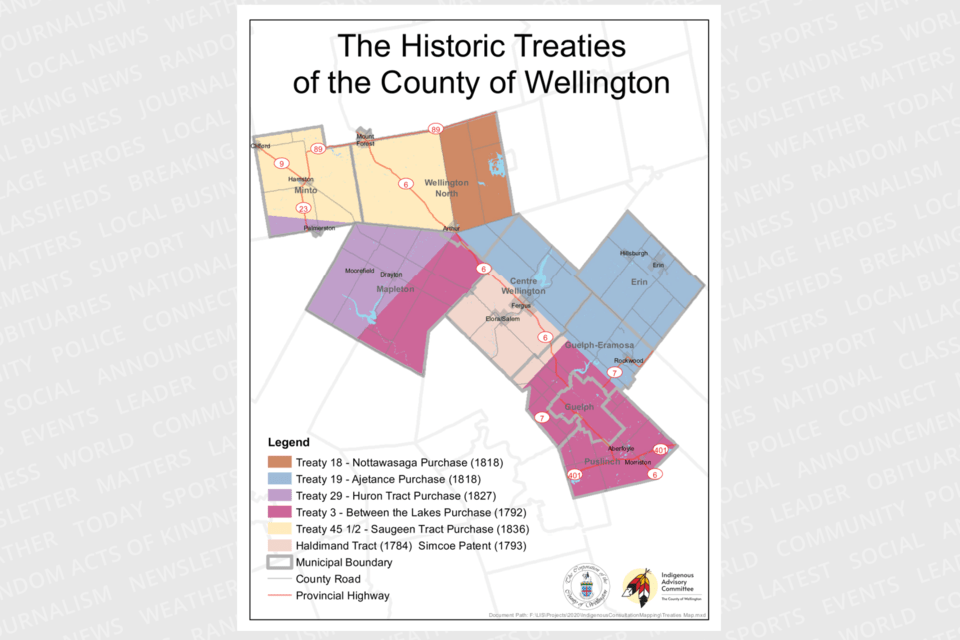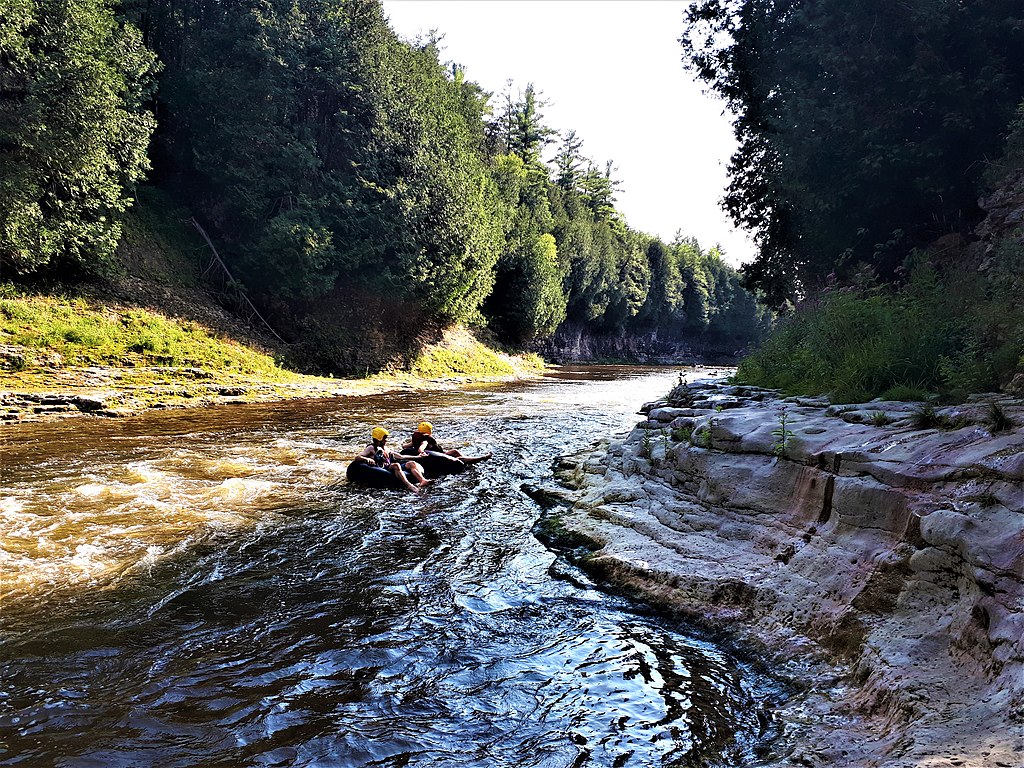This article was produced as part of an Inclusive Journalism Microcredential offered by New Canadian Media and Seneca Polytechnic. Learn more here.
WELLINGTON COUNTY – The land now known as Wellington County was not vacant land prior to the arrival of Europeans in Canada but home to numerous First Nations, which is evident by the half a dozen historic treaties signed between the Crown and Indigenous peoples.
 Understanding treaties and how they affect Indigenous peoples can help to provide context to ongoing systemic issues facing their communities, said Colleen Brunelle, chair of Wellington County’s Indigenous Advisory Committee (IAC) and citizen of the Métis Nation of Ontario.
Understanding treaties and how they affect Indigenous peoples can help to provide context to ongoing systemic issues facing their communities, said Colleen Brunelle, chair of Wellington County’s Indigenous Advisory Committee (IAC) and citizen of the Métis Nation of Ontario.
“Treaties were negotiations made between the Crown and Indigenous peoples which outlined rights and obligations for both sides,” Brunelle said. “Much of these treaties speak to resource and land interests of Indigenous peoples in exchange for payments and promises.”
Brunelle explained many First Nations people historically lived in what is now Wellington County. This includes the Anishinaabe, also referred to more specifically as the Odawa, Ojibwe and Potawatomi which together make up the Three Fires Confederacy. The Algonquin, Nipissing and Mississaugas are also part of this nation but are not part of the Three Fires Confederacy.
The Haudenosaunee or Six Nations — consisting of the Mohawk, Oneida, Onondaga, Cayuga, Seneca and later the Tuscarora — and the Attawandaron, also known as the Neutral Confederacy, also lived in Wellington County at different points in history, said Brunelle.
Six historic treaties are associated with Wellington County, with five out of six of those converge at a “star” in what is now the village of Arthur.
These treaties are:
- Treaty 18, Nottawasaga Purchase (1818)
- Treaty 19, Ajetance Purchase (1818)
- Treaty 29, Huron Tract Purchase (1827)
- Treaty 3, Between the Lakes Purchase (1792)
- Treaty 45 1/2 , Saugeen Tract Purchase (1836)
- Haldimand Treaty (1784)
“There are as many treaties in Wellington County as were required by the Crown to negotiate with rightful Indigenous Leaders and their people who resided on and were present at the time,” Brunelle said. “The fact that there are so many treaties in this area is a testament to the First Nations who were already here. This was not vacant land.”
Much of the ongoing concern with the treaties, Brunelle explained, stem from perceived broken promises and failure to uphold interests including land and resources.
The Six Nations of the Grand River website noted the Haldimand Treaty of 1784 “unequivocally promised that a tract of land six miles deep on each side of the Grand River from the river’s mouth to its source was to be enjoyed by Six Nations and their posterity forever.”
“The Haldimand Treaty Lands consisted of approximately 950,000 acres, or 385,000 hectares. Since 1784, more than 900,000 acres of land have been lost,” the website said, adding the Six Nations of the Grand River lands are less than five per cent of what was originally granted.
Brunelle said it often wasn’t easy to determine who held jurisdiction and understanding the complexities of treaties takes research and relationship building.
She said it is easy to find information on the internet from the Crown’s perspective but speaking to Indigenous people and communities affected by these treaties brings a different understanding of them.
“For example, if you about Thayendanega (Joseph Brant), you might look at the Simcoe Patent a little differently and come to understand how it might not have been a fair process in how Lord Simcoe brought in his own land surveyor to confirm assertions to reduce the Haldimand Land Track,” Brunelle said in an email. “In the end there was no legitimate appeal process open to Thayendanegea. A question of fairness?”
Brunelle said understanding treaties and how they affect Indigenous peoples can help to dispel myths, stereotypes and lies which can serve to perpetuate racism and mistrust.
“Learning about the treaties will also allow opportunity to better understand the vast nations who were and continue to be on these lands prior to colonization,” Brunelle said.
Keegan Kozolanka is a general assignment reporter for EloraFergusToday, covering Wellington County. Keegan has been working with Village Media for three years and helped launch EloraFergusToday in 2021.


